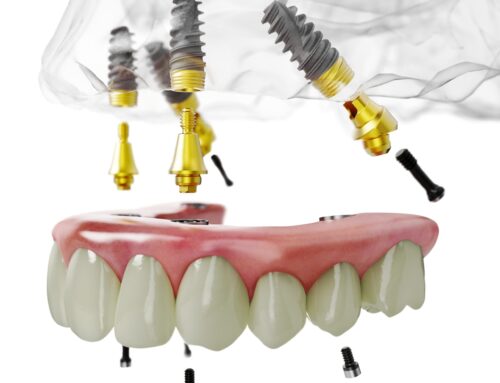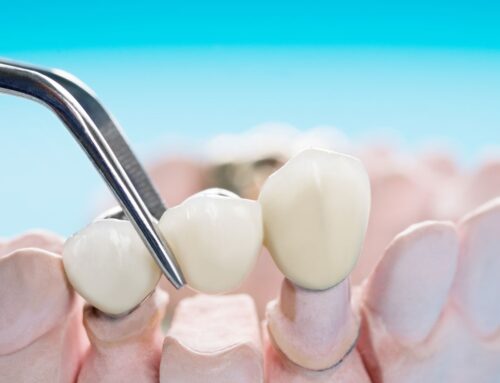New 3D Printed Teeth Comes to the World of Dental Care
You’ve likely heard a lot of buzz over the last few years about 3D printing technology, and how it is enabling the creation of things that could only be imagined in the past.
3D printing is becoming increasingly more common every day as advancements in the technology continue to expand its use in to a wider range of applications, including many types of healthcare.
3D printing has been used to create such amazing things as a portion of a new skull for a woman in the Netherlands, and a new leg bone for a man in Australia. Truly, the opportunities to improve the world of health care with this amazing technology are nearly limitless.
The field of dentistry has also begun realizing the benefits of 3D printing technology, and the advantages that it can bring to a wide variety of dental procedures. In this article, we’re going to take a look at how 3D printing works and examine some of the ways in which 3D printing is being used by dentists, orthodontists and oral surgeons. We will also speculate on just how far this technology may go in the future to bring incredible advancements to the world of dentistry.
First, let’s examine how 3D printers work, and what’s needed in order to create a 3D printed object.
How do 3D printers work?
In concept, 3D printers operate in a very similar fashion to the home inkjet printers that you are all familiar with for printing documents and photographs from your computer. Instead of ink, 3D printers use different types of plastics and composites as raw material. While inkjet printers apply a single layer to the paper to produce a printed version of your documents, 3D printers apply layer after layer, one on top of the other, of plastic or composite in a very precise sequence in order to gradually build a 3-dimensional reproduction of the computer-modeled object. This process is known as ‘additive manufacturing’.
Take a look at this quick overview video that shows the steps in the additive 3D printing process, and some examples of things that have been printed using this technology: https://www.youtube.com/watch?v=Vx0Z6LplaMU
Additive manufacturing is just one type of 3D printing. There are other 3D printers that operate with a sculpting process, which is known as ‘reduction printing’. These printers start with a solid mass of raw material and use carving tools controlled by a computer to remove excess material from the raw material, similar to how CNC machining is used to create parts made from solid blocks of metal.
3D printers can create virtually any object that can be rendered using a computer and will fit within the printing chamber of the printer. Some 3D printers are compact enough to fit on a desktop and can create smaller objects, while others are substantially larger and are designed more for industrial or commercial applications.
3D printing has been adopted rapidly by many industries, as the speed and ease with which product prototypes can be produced have been drastically improved. It has also enabled the emergence of a widespread community of amateur 3D modelers and hobbyists that design and produce all kinds of items, including jewelry, artwork, toys, and more.
Check out the vast array of things available on sites like Shapeways.com to get an idea of just how popular and diverse 3D printing has become around the world. You’ll be amazed at the level of precision and detail that can be achieved.
How have dentists used 3D printers?
Leveraging this technology for use in the healthcare industry didn’t take long, as innovators in the field were quick to begin experimenting with 3D printing capabilities. Patients around the world have already started receiving 3D printed objects to aid in their healthcare, including prosthetics and bone replacements. Doctors and surgeons are benefitting from the ability to quickly design and create custom and specialized medical tools, enabling them to do their jobs better, faster, and with shorter patient recovery times.
Dentists, orthodontists, and oral surgeons are using 3D printing technology in patient care as well as in research and testing. Using advanced scanning technology, exact replicas can be made of virtually any part of the human body, including the jaw and teeth. By having such precise replicas to work with, dental implants and corrective appliances can be designed to fit better, look better, and work better than ever before for each individual patient.
The materials that can be used to create 3D printed objects are advancing just as quickly. While the majority of objects are printed using plastics, there are now a wider variety of composite materials being used. These composites are blends of materials to produce characteristics that are best suited to the application where the 3D printed object will be used. For example, some include metallic elements, while others are more like ceramics. In dental applications, materials are being developed that will be exceptionally hard and tough, just like real tooth enamel, and can also be infused with anti-bacterial properties.
3D printing is most commonly used in the creation of dental implants and crowns. The process yields a final product that is indistinguishable from your natural teeth. The shape, size, colour, and position of the artificial tooth or crown are all precisely crafted to ensure a perfect match for your smile. Using the reduction printing method, dentists can use solid blocks of hard ceramic to create the strongest possible crowns and implants for your dental restoration.
What’s next for 3D printing in dental care?
As amazing as this technology is, we are really just starting to scratch the surface of its possibilities. As it continues to advance, and more applications are discovered for 3D printing, the ability to solve problems using these types of processes will increase. New designs will be developed, faster manufacturing methods will be discovered, and results will continually get better. Materials will become stronger and more durable and will be designed to provide even better adhesion and fusion to natural bone and gum tissue.
It’s likely that at some point in the not-so-distant-future that you may see a 3D printer alongside all the other tools at every dentist office, ready to print anything the dentist may need to give you the perfect smile you’ve always wanted.
3D Dental Printing Summary
3D printing is the most exciting technological development to emerge in the world of healthcare in recent years, and the promise that it holds is immeasurable. Dental patients can look forward to faster treatments, quicker recovery time, and superior results due to the fact that each 3D printed object has been precisely crafted and specially engineered for the unique needs of each individual patient.
This level of flexibility and customization has never been so easy to achieve in such a short amount of time, and things are only going to get better.
As pioneers in 3D printing for dental health, we have the experience and knowledge to ensure you get the best quality treatment and exceptional results from this technology.
If you’d like to learn more about 3D printed teeth and the advantages that they may offer you, contact the team at Georgian Dental® today.
We will be glad to answer all of your questions as part of a free no-obligation consultation and guide you through the different treatment options that 3D printing can offer you.
Appointment Request
If you’re interested in any of our procedures, and would like to meet with one of our dentists to discuss options, costs and get additional information, complete this short form and we’ll give you a call to arrange for a no-obligation appointment at our Barrie clinic.










